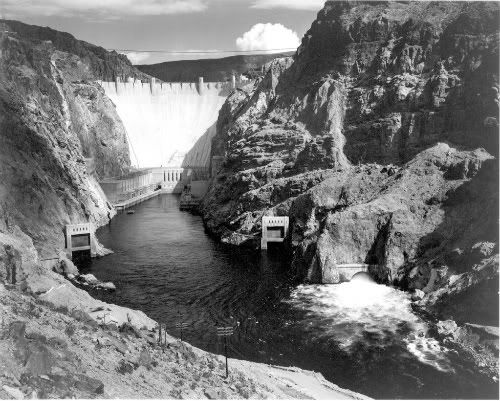The first corporate farm in southern California was the Southern California Semi-Tropic Fruit Company, which started in 1872.
Before they entered the picture, Orange County farmers would share the water of the Santa Ana river to irrigate their crops.
But when the Southern California Semi-Tropic Fruit Company started farming, they built a dam in the Santa Ana river which diverted all the water to their lands.
They dispatched a mercenery to protect their dam. In Orange County Through Four Centuries, Leo J. Friis writes, "Armed with a bowie knife, pistol and shot gun, F.C. Hazen, youthful zanjero of the Semi-Tropic, boasted that he would keep the water flowing into his [company's] ditch."
The Anaheim Water Company and other individual farmers sued the Semi-Tropic, but the case was thrown out in the Supreme Court, who suggested they "divide the water on an equitable basis." The farmers were left to sort things out for themselves. This decision was, of course, favorable to the Southern California Semi-Tropic Fruit Company.
With the increasing agricultural development of Orange County in late 1800s and early 1900s, farmers and city officials lobbied hard for the creation of a Metropolitan Water District and the building of a Boulder Dam, which would bring water from the Colorado river.
Finally, the Swing-Johnson Bill passed in 1928, signed by president Calvin Coolige, which allwed the creation of the Water District and the building of the Dam.
Interestingly, Fullerton orange tycoon Charles C. Chapman was considered a real candidate for vice president with Calvin Coolige, but he declined.

Boulder Dam, photograph by Ansel Adams
